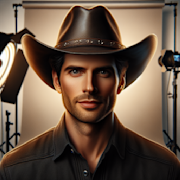Lost in Translation: Classic Films That Transcend Language Barriers

In the world of cinema, there are certain films that have the unique ability to resonate with audiences across different cultures and languages. These are the films that tell universal stories, evoke universal emotions, and ultimately transcend language barriers. In this blog post, we will take a closer look at some classic films that have achieved this feat and continue to captivate audiences around the globe.
The Power of Visual Storytelling
One of the key elements that enable a film to transcend language barriers is the power of visual storytelling. Filmmakers use a combination of images, sound, music, and editing to convey emotions and themes without relying heavily on dialogue. One prime example of this is the silent film era, where directors like Charlie Chaplin and Buster Keaton were able to communicate complex narratives solely through visual cues and physical comedy.
Another example of a film that excels in visual storytelling is Akira Kurosawa’s Seven Samurai. This Japanese classic follows a group of samurai warriors who come together to protect a village from bandits. Despite being in Japanese and set in feudal Japan, the themes of honor, sacrifice, and duty are universally understood through Kurosawa’s masterful use of composition, framing, and camera movement.
Universality of Themes
Another factor that contributes to a film’s ability to transcend language barriers is the universality of its themes. Certain themes such as love, loss, redemption, and the human condition are relatable to audiences regardless of their cultural background. Films that explore these universal themes in a compelling way are more likely to resonate with viewers around the world.
One film that exemplifies this is The Shawshank Redemption. Directed by Frank Darabont, this classic drama follows the story of a banker who is wrongly convicted of murder and forms a bond with his fellow inmates while planning his escape. The themes of friendship, hope, and resilience depicted in the film are deeply moving and strike a chord with audiences everywhere.
Iconic Performances
At the heart of every great film that transcends language barriers are iconic performances that leave a lasting impact on viewers. Whether it’s a powerful monologue, a poignant gesture, or a memorable character, actors have the ability to connect with audiences on an emotional level and communicate the essence of a story beyond words.
One such performance can be seen in Federico Fellini’s La Strada. This Italian film tells the story of a young woman who is sold to a traveling strongman and follows their tumultuous relationship as they journey across Italy. The performances by Anthony Quinn and Giulietta Masina are raw, emotional, and hauntingly beautiful, making the film a timeless masterpiece that resonates with audiences worldwide.
Timeless Aesthetic
Lastly, films that transcend language barriers often have a timeless aesthetic that appeals to viewers regardless of the era in which they were made. The use of striking visuals, captivating cinematography, and evocative production design can create a sense of timelessness that transcends cultural differences and speaks to the universal language of art.
One example of a film with a timeless aesthetic is Stanley Kubrick’s 2001: A Space Odyssey. Released in 1968, this science fiction masterpiece continues to captivate audiences with its groundbreaking special effects, mesmerizing visuals, and thought-provoking narrative. Despite being set in the future and featuring minimal dialogue, the film’s visual beauty and profound themes of evolution and technology make it a transcendent cinematic experience for viewers of all backgrounds.
In conclusion, the power of cinema to transcend language barriers lies in its ability to tell visually compelling stories, explore universal themes, deliver iconic performances, and create a timeless aesthetic. The classic films mentioned in this blog post are just a few examples of how the art of filmmaking can connect people from different cultures and backgrounds through the shared experience of storytelling. As long as there are stories to be told and emotions to be felt, cinema will continue to bridge the gap between languages and bring people together in the universal language of film.

Alberto Miller
Movie Fanatic
More From Classics Authority Movies

Movie
La La Land (2016)

Movie
A Man for All Seasons (1966)

Movie
Timeless Tropes: Classic Movie Themes That Continue to Resonate

Movie
Seven Samurai (1954)

Movie
The Art of Projection: The Evolution of Movie Theaters and Cinemas

Movie
Intolerance (1916)





